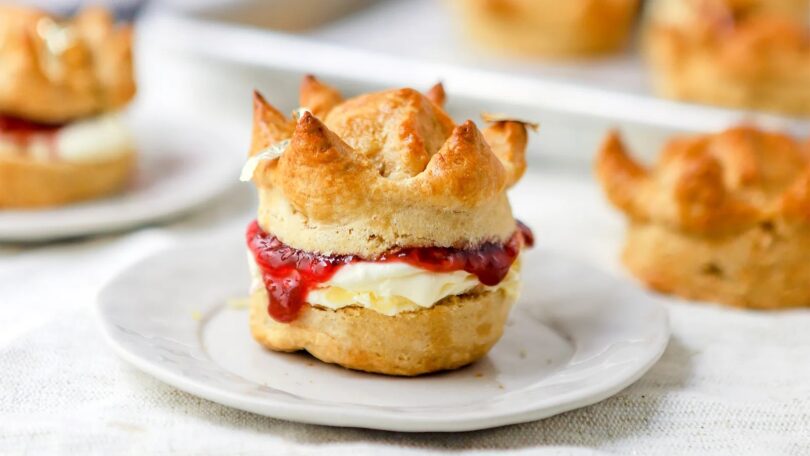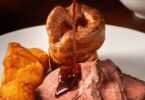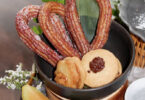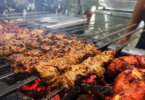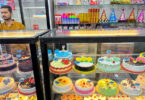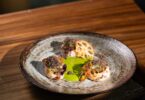Hugh Tucker
While the debate about whether the cream or jam should go on first may rumble on forever, everyone can agree that scones are a favourite celebratory food. The Royal Family is no exception, with scones being served every summer at Buckingham Palace.
Martha Collison, British baker, author and food columnist, has created a scone recipe fit for a king with her Coronation Crown Scones, melding the tastes of King Charles with this classic treat. Talking about developing the dish, Collison said, “It is truly a great honour to have been tasked with creating a recipe for the upcoming Coronation. I wanted to choose something quintessentially British, that can easily be shared with friends and neighbours – and something everyone can make using ingredients they might already have in the cupboard!”
The recipe makes 10 scones, so there will be plenty to share (although we don’t expect they’ll last long), and you can adapt it to suit your tastes should they not match those of the King.
“I’ve infused my scone dough with Darjeeling tea and honey: supposedly how King Charles takes his afternoon cup of tea, and have used scissors to shape the top of the dough into a crown, so they will really stand out in your Afternoon Tea spread,” explained Collison. “You can leave out the tea entirely if it isn’t to your taste, and just try out the fun decoration. Make sure you chill the dough for at least an hour, or you’ll find the points will droop in the oven (still delicious, but not as regal!).”
—
Martha’s Coronation Crown Scones
By Martha Collison
These scones are perfect for celebrating, as they are each shaped into crowns! Garnish with gold leaf or lustre spray if you’re feeling luxurious. They are flavoured with King Charles’s favourite tea: Darjeeling sweetened with honey.
Makes 10 scones
Method
Step 1
Place the teabag (or loose-leaf tea) into a small saucepan and pour over the milk. Heat gently, until the mixture is steaming, then turn off the heat and leave the tea to steep for 30 minutes. Remove the teabag or strain the milk into a small jug, then add the honey and mix well.
Step 2
Preheat the oven to 180C/160C fan and line a baking tray with baking parchment.
Step 3
Place the flour into a large bowl and add the cubes of butter. Rub the butter into the flour using your fingertips until it is well combined and roughly resembles breadcrumbs – it is okay to be able to see a few small pieces of butter as this will create a flaky texture.
Step 4
Gradually pour the infused milk and honey mixture into the centre of the well, stirring using a round bladed knife. A soft, rough dough should form. You may need to add a little more milk to mop up any excess flour. Tip the dough out onto a lightly floured surface and knead briefly to smooth out the dough and bring it together into a ball.
Step 5
Gently roll the dough out to a thickness of around 3cm. Reroll the remaining dough, taking care not to handle the dough too much, and punch out more scones – you should get 10 in total.
Step 6
Use a pair of scissors to snip small triangles in the top of the dough from the outside in, and press them upwards to form a crown-like ring around the scone. You need to push the scissors slightly into the scone to create a point that stands proud.
Step 7
Chill the scones for 1 hour to firm up (if you skip this, they won’t hold their shape). Arrange the scones on a baking tray, then brush the tops and crown points with a little egg wash.
Step 8
Bake for 12-15 minutes, or until risen and golden brown. Serve warm from the oven, split in two, with clotted cream and strawberry jam.
Courtesy: BBC

